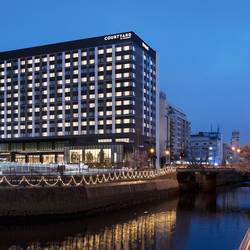Located between Tokyo and Osaka, Nagoya has a unique culture, including its cuisine. As one of Japan's major cities and industrial centers, Nagoya offers much to visitors.
With excellent transportation connections, it’s no surprise that Nagoya is one of the must-visit destinations in Japan.
Transportation Options in Nagoya
Nagoya is the capital of Aichi Prefecture in central Japan. This city is located between Tokyo and Osaka and is also known as Central Japan. As one of Japan's major cities, Nagoya has everything to offer visitors, from cultural attractions to modern destinations.
You can explore Nagoya's tourist spots by various means of transportation. Here are some transportation options that you can use while in Nagoya.
1. Nagoya Railway
2. Nagoya Subway
3. Taxi
4. Bus
5. Meguru Tour Bus
Also read: Itinerary & Budget: 14D 13N in Japan
6. Bike
7. Walking
There are various ways to get around Nagoya comfortably and safely. You can choose it according to your needs. Ensure a comfortable vacation by booking flight tickets and hotels only on Traveloka!
Tags:
japan
Top Picks for Activities from Travelers

Day Tour with Exclusive Chartered Car Service in Nagoya City, Shirakawa-go, Takayama & Kanazawa | Japan

LEGOLAND Japan Tickets

Day Tour with Exclusive Chartered Car Service in Nagoya City, Shirakawa-go, Takayama & Kanazawa | Japan

LEGOLAND Japan Tickets
Recommended Articles

Where to Stay in Bali? Here Are 7 Areas to Choose!

Halloween Horror Nights 2025: What To Expect, When, Where, and How Much

Hong Kong Disneyland: Rides, Tips & Ticket Prices

The Baku Street Circuit: Why the Azerbaijan F1 GP Is One of the Most Unique Races to Visit

End the Season in Style at the Glamorous Abu Dhabi F1 GP

The Las Vegas F1 GP: Neon Lights, Luxury Hotels, and High-Octane Action
Explore the Best of Nagoya

Nagoya










 Facebook
Facebook Instagram
Instagram Youtube
Youtube
